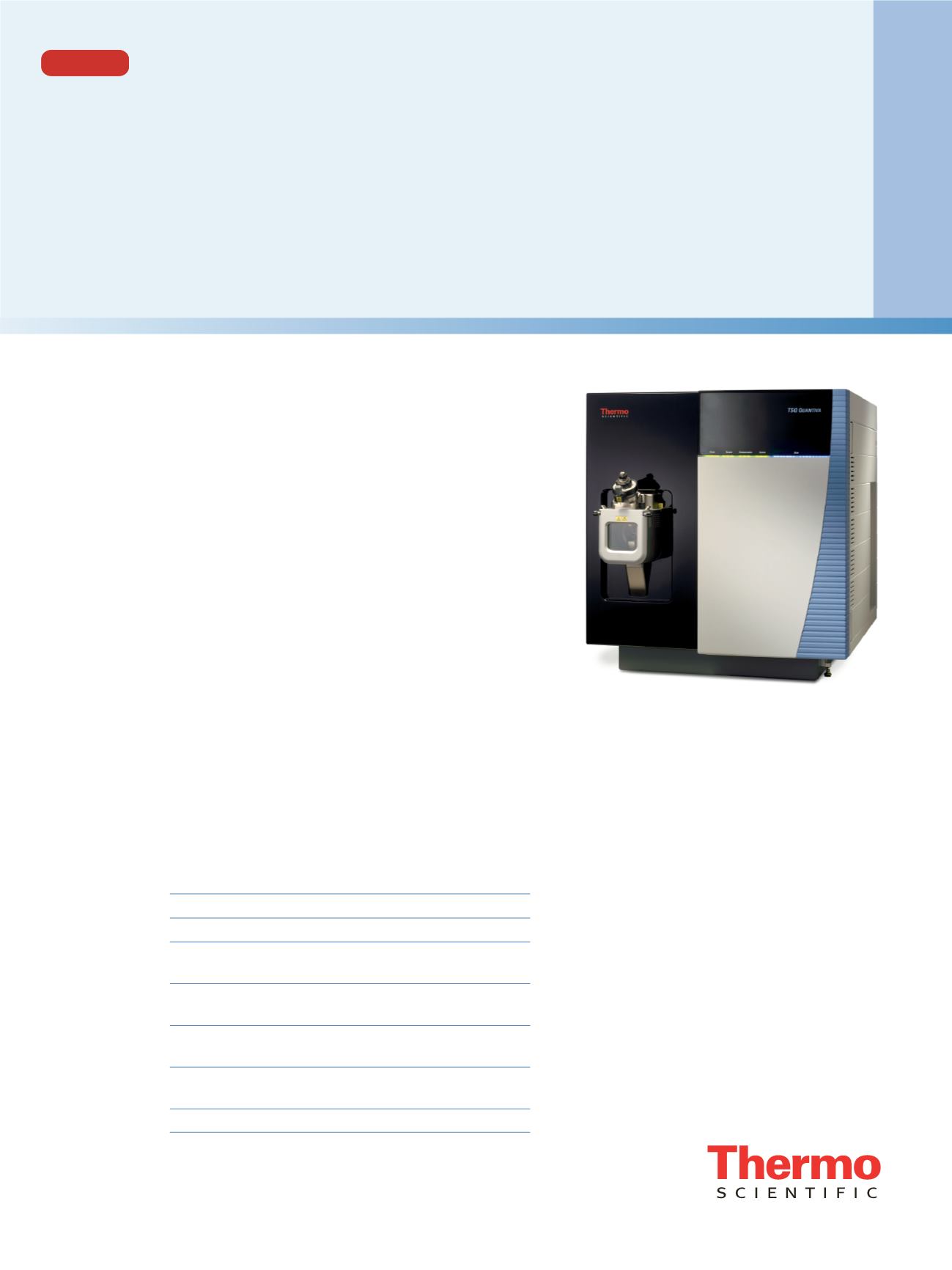

Quantitative Analysis of Low Testosterone
Concentrations in Plasma Using the
TSQ Quantiva Triple-Stage Quadrupole MS
Kristine Van Natta and Marta Kozak
Thermo Fisher Scientific, San Jose, CA
Application Note 594
Key Words
Testosterone, liquid chromatography, tandem mass spectrometry
Goal
To develop an LC/MS method meeting requirements for testosterone
research analysis in female and juvenile plasma.
Introduction
Analysis of testosterone in female and juvenile plasma
samples for research requires an analytically sensitive
method with a limit of quantitation of at least 10 pg/mL.
Liquid chromatography coupled with mass spectrometry
(LC/MS), an analytically sensitive and selective technique,
is widely accepted for testosterone analysis in complex
matrices such as human serum or plasma.
Experimental
Sample Preparation
Plasma and serum samples were spiked with an internal
standard (testosterone-D
3
) and subjected to liquid-liquid
extraction method using methyl tert-butyl ether. The
resulting organic layer was evaporated, and the residue
was reconstituted in Fisher Chemical
™
methanol/water
(1:1). A 10 µL aliquot of processed sample was analyzed
with the following LC/MS method:
HPLC
Pump:
Thermo Scientific
™
Accela
™
1250 pump
Autosampler:
Accela AS
HPLC column:
Thermo Scientific
™
Accucore
™
aQ
100 x 2.1 mm, 2.6 µm, ambient temperature
Mobile phase A:
5 mM ammonium acetate in water/methanol
(95:5 v/v) (Fisher Chemical)
Mobile phase B:
5 mM ammonium acetate in methanol
(Fisher Chemical)
Mobile phase C:
Acetonitrile/isopropyl alcohol/acetone
(45:45:10 v/v/v) (Fisher Chemical)
LC gradient:
Refer to Table 1
Figure 1. TSQ Quantiva triple-stage quadrupole
mass spectrometer



















